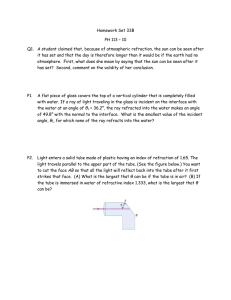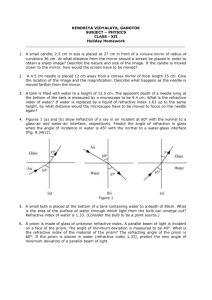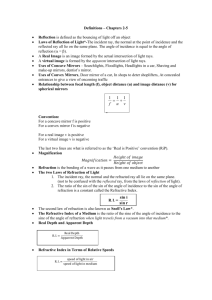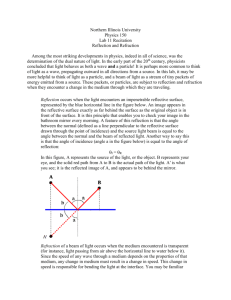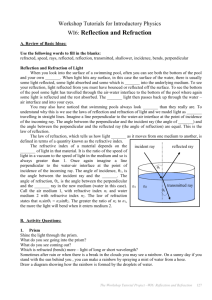Session 28- Reflection and Refraction
advertisement
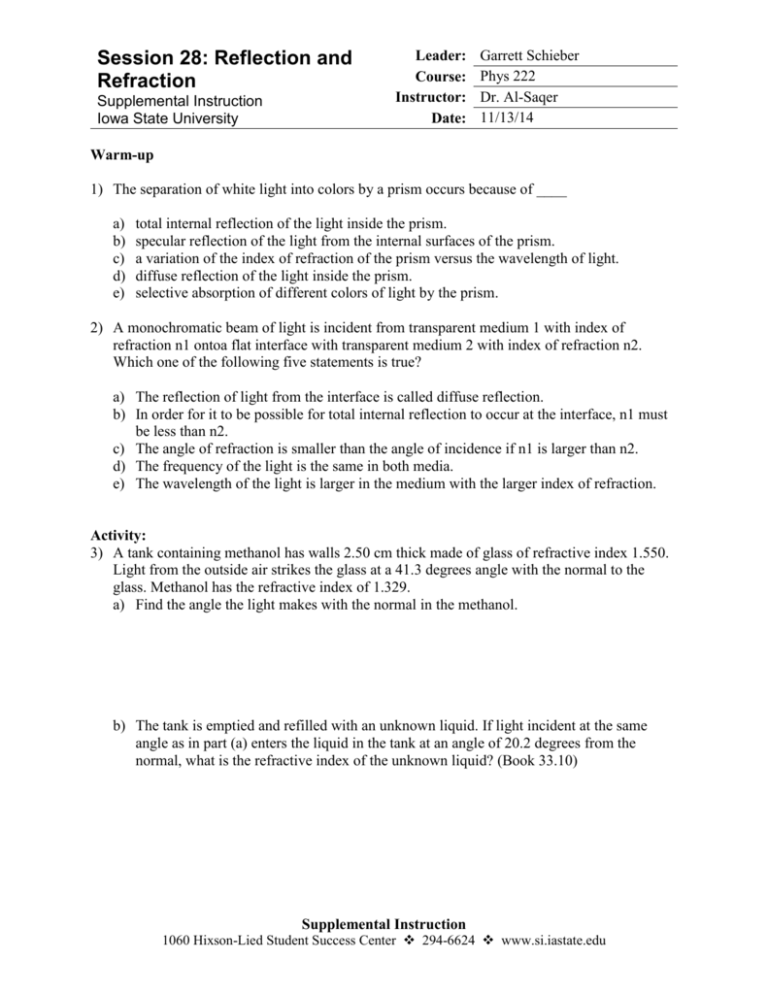
Session 28: Reflection and Refraction Supplemental Instruction Iowa State University Leader: Course: Instructor: Date: Garrett Schieber Phys 222 Dr. Al-Saqer 11/13/14 Warm-up 1) The separation of white light into colors by a prism occurs because of ____ a) b) c) d) e) total internal reflection of the light inside the prism. specular reflection of the light from the internal surfaces of the prism. a variation of the index of refraction of the prism versus the wavelength of light. diffuse reflection of the light inside the prism. selective absorption of different colors of light by the prism. 2) A monochromatic beam of light is incident from transparent medium 1 with index of refraction n1 ontoa flat interface with transparent medium 2 with index of refraction n2. Which one of the following five statements is true? a) The reflection of light from the interface is called diffuse reflection. b) In order for it to be possible for total internal reflection to occur at the interface, n1 must be less than n2. c) The angle of refraction is smaller than the angle of incidence if n1 is larger than n2. d) The frequency of the light is the same in both media. e) The wavelength of the light is larger in the medium with the larger index of refraction. Activity: 3) A tank containing methanol has walls 2.50 cm thick made of glass of refractive index 1.550. Light from the outside air strikes the glass at a 41.3 degrees angle with the normal to the glass. Methanol has the refractive index of 1.329. a) Find the angle the light makes with the normal in the methanol. b) The tank is emptied and refilled with an unknown liquid. If light incident at the same angle as in part (a) enters the liquid in the tank at an angle of 20.2 degrees from the normal, what is the refractive index of the unknown liquid? (Book 33.10) Supplemental Instruction 1060 Hixson-Lied Student Success Center 294-6624 www.si.iastate.edu 4) The critical angle for total internal reflection at a liquid-air interface is 43.0 degrees. (Book 33.19) a) If a ray of light traveling in the liquid has an angle of incidence at the interface of 34.5 degrees, what angle does the refracted ray in the air make with the normal? b) If a ray of light traveling in air has an angle of incidence at the interface of 34.5 degrees, what angle does the refracted ray in the liquid make with the normal? 5) Light enters a solid tube made of plastic having an index of refraction of 1.65. The light travels parallel to the upper part of the tube. (See the figure.) You want to cut the face AB so that all the light will reflect back into the tube after it first strikes that face (Book 33.17) a) What is the largest that theta can be if the tube is in air? b) If the tube is immersed in water of refractive index 1.333, what is the largest that theta can be?
